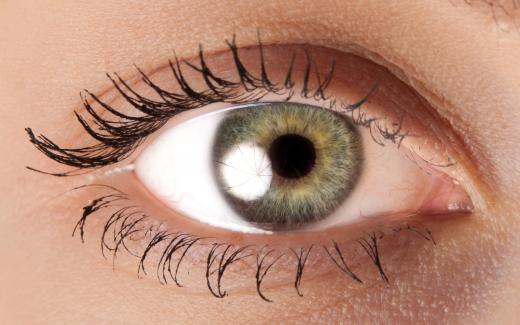At AllThingsNature, we're committed to delivering accurate, trustworthy information. Our expert-authored content is rigorously fact-checked and sourced from credible authorities. Discover how we uphold the highest standards in providing you with reliable knowledge.
What is Mycobacterium Leprae?
Mycobacterium leprae is the bacteria responsible for the disease leprosy, also called Hansen's disease, after Dr. Gerhard Armauer Hansen, the man who discovered the bacteria in 1873. Leprosy is a disease that causes damage to the peripheral nerves and the skin, and can lead to serious complications, including loss of toes and fingers, infertility, and blindness. Scientists do not completely understand how mycobacterium leprae spreads, but they suspect it spreads through respiratory transmission. Though mycobacterium leprae has been widely feared throughout history, modern treatments have been largely successful in treating it.
Mycobacterium leprae is a gram positive, aerobic bacteria that is rod-shaped in appearance. It has the same shape and size as the related bacteria mycobacterium tuberculosis, the bacteria that causes tuberculosis. M. leprae has been cultured in the footpads of armadillos and mice, two of the animals believed responsible for its spread. It has never been grown under artificial conditions.

This bacteria affects the mucous membranes, peripheral nerves and skin. About 10 to 29 percent of those who are exposed to mycobacterium leprae may develop indeterminate, or tuberculoid, leprosy, which is the less severe form of the disease. About 50 percent of those who develop indeterminate leprosy are at risk for succumbing to full-blown, or lepratomous, leprosy, the more severe form of the disease.

Initial symptoms of tuberculoid leprosy include a red, patchy rash on the extremities and torso. Patients may lose some of their touch sensation in the area. Later symptoms can include weakness of the feet or hands, dryness and stiffness of skin, severe pain, vision problems, and enlargement of the nerves surrounding the knees and elbows. Blindness and loss of digits can occur.

Lepratomous leprosy often causes a symmetrical rash on the buttocks, ears, face, knees, elbows and wrists. The rash can have varying characteristics. It may be pale in color or dark, limited or expansive, smooth or elevated above the skin's surface. Additional symptoms can include thickening of facial skin, thinning of eyelashes and eyebrows, lymph node swelling and gynecomastia. Leprosy can cause infertility in males, and can lead to the loss of toes or fingers, loss of vision, or an increased risk of arthritis.

Though much feared historically, leprosy can be cured today. Mycobacterium leprae is considered a highly drug-resistant bacteria, and doctors typically prescribe a combination of antibiotics to eliminate it from the body. Clofazimine, rifampin, and dapsone are most widely used in combination to treat leprosy. Patients must generally follow an antibiotic course for at least one year to treat tuberculoid leprosy, and for at least two years to treat lepratomous leprosy.
Frequently Asked Questions
What is Mycobacterium leprae and what disease does it cause?

Mycobacterium leprae is a slow-growing bacterium that causes leprosy, also known as Hansen's disease. This chronic infectious disease primarily affects the skin, peripheral nerves, mucosal surfaces of the upper respiratory tract, and the eyes, leading to severe disfigurement and disabilities if left untreated.
How is Mycobacterium leprae transmitted from one person to another?

Transmission of Mycobacterium leprae is not fully understood, but it is believed to occur mainly through prolonged close contact with an untreated infected person. Respiratory droplets are thought to be the primary route, as the bacterium can spread when an infected person coughs or sneezes. However, the risk of transmission is generally low.
Is there a vaccine available for Mycobacterium leprae?

Currently, there is no specific vaccine for Mycobacterium leprae. However, the Bacillus Calmette-Guérin (BCG) vaccine, primarily used against tuberculosis, has shown some effectiveness in providing partial protection against leprosy according to the World Health Organization. Ongoing research aims to develop a more effective leprosy-specific vaccine.
What are the symptoms of a Mycobacterium leprae infection?
Symptoms of a Mycobacterium leprae infection include skin lesions that may be lighter than the normal skin tone or reddish, loss of sensation in the affected areas, muscle weakness, and numbness. The progression is slow, and symptoms can take years to appear after initial infection, complicating early diagnosis and treatment.
Can Mycobacterium leprae infections be cured?
Yes, Mycobacterium leprae infections can be cured with a combination of antibiotics known as multidrug therapy (MDT), which the World Health Organization provides for free to all patients worldwide. Treatment duration can range from six months to a year or more, depending on the severity of the disease.
Are there any long-term effects after being treated for Mycobacterium leprae?
After successful treatment of Mycobacterium leprae, some individuals may experience long-term effects such as nerve damage, which can lead to disabilities. Early detection and treatment are crucial to minimize these complications. Rehabilitation and surgery can help manage disabilities and improve the quality of life for those affected.
AS FEATURED ON:
AS FEATURED ON:

















Discuss this Article
Post your comments